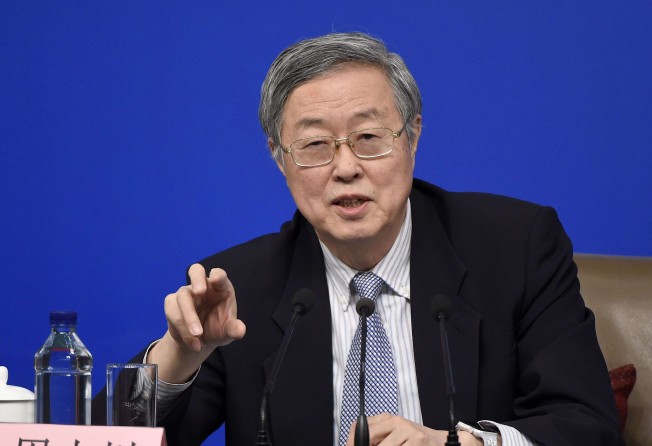Did China follow the Fed in raising rates? If yes, why is the central bank denying it?

Did China’s central bank follow in the footsteps of its US counterpart to raise interest rates? It has strangely become an issue of debate for China’s monetary policy watchers.
The facts on Thursday were pretty clear. A few hours after the US Federal Reserve raised the overnight fund rate by 0.25 percentage points, interest rates in China’s money market, or the borrowing costs charged by the central bank to commercial lenders, edged up 10 basis points for a number of transactions.
The People’s Bank of China published an unusual statement on its website explaining that the higher rates in the interbank market were a market response to the Fed’s move rather than a deliberate policy reaction and it didn’t mean any “interest rate increases” in China.
The criteria for whether China is raising interest rates are the benchmark loan and deposit rates, the central bank said. The interest rate changes in money market deals between the central bank and commercial lenders were decided “mainly by the market” and “shouldn’t be read into too much”, according to the central bank.
But the higher borrowing costs in China still attracted a lot of attention. After all, rates in reverse repurchase agreements and the medium-term lending facility, the monetary policy tools in adjusting liquidity, are influenced heavily, if not solely decided, by China’s central bank. At least, the central bank was tolerating money market rates to move higher on Thursday morning.
In a broader context, the central bank itself has been playing down the “benchmark role” of deposit and lending rates as it has liberalised the rates banks can charge to their clients.
As early as 2014, central bank Governor Zhou Xiaochuan said China was in the process of finding its own “policy rates” in the money markets as the traditional benchmarks, namely one-year deposit and loan rates, were gradually losing relevance and frequency in monetary policy operations.
The last time China adjusted the deposit and lending rates was 17 months ago.
By contrast, money market rates offer a more frequent and consistent measure to judge China’s monetary policy stance.
An edge-up of 10 basis points, or 0.01 percentage points, may look small and trivial, but it was the second increase this year and it is a signal pointing to further rises down the road, particularly if the Federal Reserve keeps raising rates.
That is why the market is taking this seriously. So, why is China’s central bank denying any interest rate increases when the money market rates are moving upwards?
It reflects the delicate balance the central bank is trying to achieve under its “prudent and neutral” monetary policy stance and its dilemma over what course to chart as the US is ending its post financial crisis stimulus.
While China is putting on a brave face about capital outflows and the depletion of its foreign exchange reserves, it is quietly strengthening controls over outbound remittance and investments. China’s outbound investment, even measured by yuan, has plunged 53 per cent in the first two months of 2017 from a year ago, China’s ministry of commerce said on Thursday.
So when the Federal Reserve is raising interest rates, China’s central bank cannot afford to sit idle because that may bring additional risks of capital outflow.
However, China’s central bank also cannot afford a serious monetary tightening either because a quick rise in borrowing costs may lead to widespread debt defaults or even kill a nascent economic recovery at home.
Therefore, China’s central bank must tolerate modest rises in money market rates while avoid sending any broad tightening signals to hurt the economy.
For those who agree with China’s central bank that only a hike in benchmark lending or deposit rates can be called “an interest rate increase”, then it’s true that China is not following the US and it may keep its “benchmark” rates unchanged throughout this year.
However, for those who believe higher money market rates can be seen as authentic interest rate rises, especially rates decided in deals where the central bank is the key trading counterpart, then China is following the suit of the Federal Reserve and there will be many more “mini-hikes” to come.